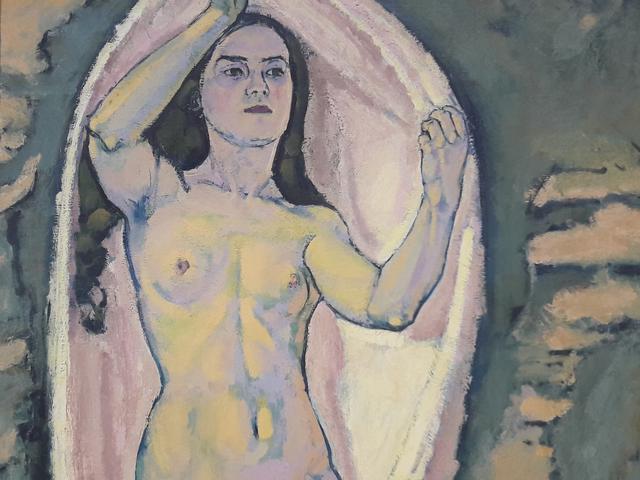Venus in the grotto

"Venus in the Grotto" is a captivating painting by Kolo Moser, created after his departure from the Wiener Werkstätte in 1907. Returning to his roots in painting, Moser's style underwent a transformation following a visit to Ferdinand Hodler in Geneva in 1913. This encounter marked a shift towards more austere, two-dimensional compositions and a reduced artificial palette, reflecting a deeper sense of pathos and symbolism in his work. The radiant goddess of love depicted in the painting is framed by an oval, symbolizing a grotto. The composition evokes ancient Roman sarcophagi, where personifications of the wind and sea were commonly engraved.
Moser's "Venus in the Grotto" exudes a sense of timeless beauty and classical elegance. The goddess is portrayed with grace and poise, her figure exuding a sense of ethereal charm. The use of symbolism, such as the oval frame representing a grotto, adds layers of meaning to the painting, inviting viewers to contemplate the deeper significance behind the imagery. Moser's mastery of color and form is evident in the harmonious composition, where every brushstroke conveys a sense of purpose and emotion.
As visitors gaze upon "Venus in the Grotto," they are transported to a world of myth and legend, where the divine and mortal realms intertwine. The painting serves as a window into Moser's artistic vision, showcasing his ability to capture the essence of beauty and grace in a single frame. The intricate details and subtle nuances in the artwork invite viewers to explore its depths, uncovering hidden meanings and symbols that enrich the viewing experience. "Venus in the Grotto" stands as a testament to Moser's talent and creativity, leaving a lasting impression on all who behold its mesmerizing beauty.
© ChatGPT 3.5